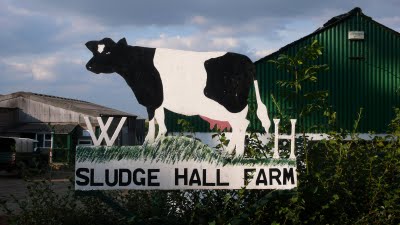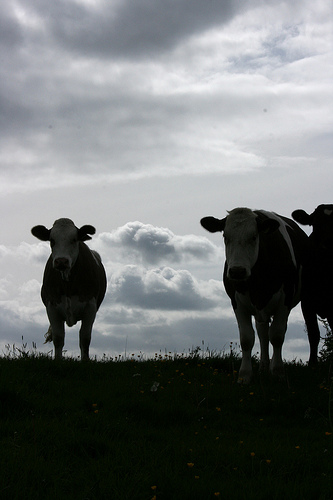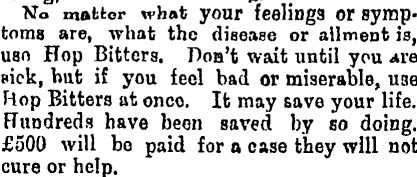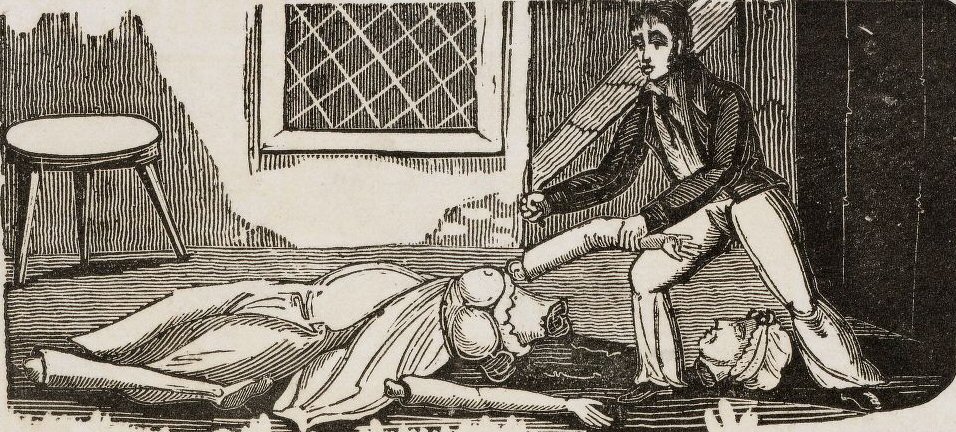If we want to know about precious stones embedded in the heads of toads – and which of us does not? – we turn, of course, not to Ubermungo™, but to Sir Thomas Browne, who has this to say in Pseudodoxia Epidemica or Enquries into very many received tenets and commonly presumed truths (1646-1672):
As for the stone commonly called a Toad-stone, which is presumed to be found in the head of that animal, we first conceive it not a thing impossible: nor is there any substantial reason why in a Toad there may not be found such hard and lapideous concretions. For the like we daily observe in the heads of Fishes, as Cods, Carps, and Pearches: the like also in Snails, a soft and exosseous animal, whereof in the naked and greater sort, as though she would requite the defect of a shell on their back, Nature near the head hath placed a flat white stone, or rather testaceous concretion…
Again, though it be not impossible, yet it is surely very rare: as we are induced to believe from some enquiry of our own, from the trial of many who have been deceived, and the frustrated search of Porta, who upon the explorement of many, could scarce find one. Nor is it only of rarity, but may be doubted whether it be of existencie, or really any such stone in the head of a Toad at all. For although Lapidaries and questuary enquirers affirm it, yet the Writers of Minerals and natural speculators, are of another belief: conceiving the stones which bear this name, to be a Mineral concretion; not to be found in animals, but in fields…
Lastly, If any such thing there be, yet must it not, for ought I see, be taken as we receive it, for a loose and moveable stone, but rather a concretion or induration of the crany it self; for being of an earthy temper, living in the earth, and as some say feeding thereon, such indurations may sometimes happen. Thus when Brassavolus after a long search had discovered one, he affirms it was rather the forehead bone petrified, then a stone within the crany; and of this belief was Gesner. Which is also much confirmed from what is delivered in Aldrovandus, upon experiment of very many Toads, whose cranies or sculs in time grew hard, and almost of a stony substance. All which considered, we must with circumspection receive those stones which commonly bear this name, much less believe the traditions, that in envy to mankind they are cast out, or swallowed down by the Toad…
And in a note, Browne quotes:
From Thomas Nicols (1652) Lapidary, Or, The History of Pretious Stones. Part II, Chap. XXXVI, pp. 158-159: Of the Garatromo or Toadstone.
This stone is of a brownish colour somewhat tending to rednes, convex on the one side; & on the other side, sometimes plain, sometimes hollow.
Some say this stone is found in the head of an old Toad; others say that the old toad must be laid upon the cloth that is red and it will belch it up, or otherwise not; you may give a like credit to both these reports, for as little truth is to be found in them as may possibly be: Witnesse Anselmus Boetius in lib. 2 in the chapter of this stone; who saith that to try this experiment in his youth he took an old Toad and laid it upon a red cloth and watch it a whole night to see it belch up its stone, but after his long and tedious watchfull expectation he found the old Toad in the same posture to gratifie the great pains of his whole nights restlessenesse, and since that time he taketh that stone which is called Garatromo or the Toad-stone, to be an obscure Starre-stone.
Its names. This stone is called Batrachites, and Brontia, and Ombria, and Garatronium, Lapis Borax, Lapis Bufonis, Lapis Rubetæ. In French, un Crapaut & Crapaudine. In Germanne ein Krattenstein. Some in Latine call it Crapontina. In English a Toadstone.
Of its kinds. Baccius maketh two kinds of this stone: One of a whitish brown colour: another of a black colour with a bluish eye. This stone saith Boetius is sometimes found of the bignesse of an egg, and those that are so great, are sometimes brownish, sometimes reddish, sometimes yellowish, sometimes greenish. Some are no bigger then the nail of the hand and these by Jewellers are taken for the true Toad-stones. It is reported of it that it is good against poyson if it be worn so as it may touch the skin, and that if poyson be present it will sweate, and that if any inflations procured by venemous creatures be touchd with it, it will cure them. So saith Weckerus, Lemnius, and Baccius.
Browne also quotes:
From Edward Topsell (1608) Historie of Serpents , pp. 188-189:
There be many late Writers, which doe affirme that there is a precious stone in the head of a Toade, whose opinions (because they attribute much to the vertue of this stone) it is good to examine in this place, that so the Reader may be satisfied whether to hold it as a fable or as a true matter, exemplifying the powerfull working of Almightie God in nature, for there be many that weare these stones in Ringes, being verily perswaded that they keepe them from all manner of grypings and paines of the belly and the small guttes. But the Art (as they terme it) is in taking of it out, for they say it must be taken out of the head alive, before the Toad be dead, with a peece of cloth of the colour of red Skarlet, where-withall they [sc. the toads] are much delighted, so that they stretch out themselves as it were in sport upon that cloth, they cast out the stone of their head, but instantly they sup it up againe, unlesse it be taken from them through some secrete hole in the said cloth, whereby it falleth into a cestern or vessell of water, into which the Toade dareth not enter, by reason of the coldnes of the water. These things writeth Mossarius.
Brasavolus saith, that he found such a thing in the head of a Toade, but he rather tooke it to be a bone then a stone, the colour wherof was browne, inclyning to blacknes. Some say it is double, namely outwardly a hollow bone, and inwardly a stone contained therein, the vertue whereof is said to breake, prevent, or cure the stone in the bladder. Now how this stone should be there ingendered, there are divers opinions also, & they say that stones are ingendered in living creatures two manner of wayes, either throuh heate, or extreame cold, as in the Snaile, Pearch, Crabbe, Indian Tortizes and toades; so that by extremitie of cold this stone should be gotten.
Against this opinion the colour of the stone is objected, which is some-times white, sometimes browne, or blackish, having a cittrine or blew spot in the middle, sometimes all greene, wher-upon is naturally engraven the figure of a Toade: and this stone is somtimes called Borax, sometimes Crapodinæ, and sometimes Nisæ, or Nusa, and Chelonites. Others doe make two kindes of these stones, one resembling a great deale of Milke mixed with a little blood, so that the white exceedeth the Redde, and yet both are apparant and visible: the other all blacke, wherein they say is the picture of a Toade, with her legges spredde before and behind. And it is further affirmed, that if both these stones be held in ones hand in the presence of poyson, it will burne him. The probation of this stone, is by laying of it to a live Toade, and if she lift up her head against it, it is good, but if she run away from it, it is a counterfeyte.
Geor: Agricola calleth the greater kind of these stones, Brontia, and the lesser & smoother sort of stones, Cerauniæ, although some cõtrary this opinion, saying that these stones Brantia & Cerauniæ, are bred on the earth by thundering and lightning. Whereas it is said before, that the generation of this stone in the Toade proceedeth of colde, that is utterly unpossible, for it is described to be so solid and firme, as nothing can be more had, and therefore I cannot assent unto that opinion, for unto hard and solide things, is required abundance of heate: and againe, it is unlikely, that whatsoever this Toad-stone be, that there should be any store of them in the world as are every where visible, if they were to be taken out of the Toades alive, and therefore I rather agree with Saluedensis a Spaniard, who thinketh that it is begotten by a certaine viscous spume, breathed out uppon the head of some Toade, by her fellowes in the Spring-time.
This stone is that which in auncient time was called Batrachites, and they attribute unto it a vertue besides the former, namely, for the breaking of the stone in the bladder, and against the Falling-sicknes. And they further write that it is a discoverer of present poyson, for in the presence of poyson it will change the colour. And this is the substaunce of that which is written about this stone. Now for my part I dare not conclude either with it or against it, for Hermolaus, Massarius, Albertus, Sylvaticus, and others, are directlie for this stone ingendered in the braine or head of the Toade: on the other side, Cardan and Gesner confesse such a stone by name and nature, but they make doubt of the generation of it, as others have delivered; and therefore they beeing in sundry opinions, the hearing wereof might confound the Reader, I will referre him for his satisfaction unto a Toade, which hee may easily every day kill: For although when the Toade is dead, the vertue thereof be lost, which consisted in the eye, or blew spot in the middle, yet the substaunce remaineth, and if the stone be found there in substance, then is the question at an end, but if it be not, then must the generation of it be sought for in some other place.
We shall end with two other quotations, the first from Shakespeare, the second from Devoto. The latter is talking from the point of view of an insect rather than a toad, but let’s not be picky.
“Sweet are the uses of adversity; / Which, like the toad, ugly and venomous, / Wears yet a precious jewel in his head”.
“But the brightest jewel inside of me / Glows with pleasure at my own stupidity”






 François Rabelais
François Rabelais Sir Thomas Browne
Sir Thomas Browne

